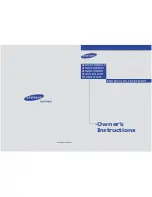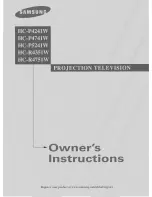
8
1. Introduction
Terminal Panel Features
1. COMPUTER 1 IN/Component Connector (Mini D-
Sub 15 Pin) (
→
page
AUDIO IN (Stereo Mini Jack) (
→
)
2. COMPUTER 2 IN/Component (R/Cr, G/Y, B/Cb, H,
V) Connectors (BNC × 5) (
→
)
AUDIO IN (Stereo Mini Jack) (
→
)
3. COMPUTER 3 (DVI-D) IN Connector (24 Pin)
(HDCP compatible) (
→
AUDIO IN (Stereo Mini Jack) (
→
)
4. S-VIDEO IN Connector (Mini DIN 4 Pin) (
→
page
5. VIDEO IN Connector (RCA) (
→
page
6. VIDEO/S-VIDEO AUDIO L/MONO, R (RCA) (
→
)
7. MONITOR OUT Connector (Mini D-Sub 15 Pin)
(
→
)
8. AUDIO OUT (Stereo Mini Jack) (
→
page
9. PC CONTROL Port (D-Sub 9 Pin) (
→
)
Use this port to connect your PC or control system
to control your projector via a serial cable. This
enables you to control the projector using serial
communication protocol. A commercially available
RS232C cross cable is required to use this port. You
can also control the projector by using PC Control
Utility Pro 4 contained on the supplied NEC Projec-
tor CD-ROM. To do so you must first have PC Con-
trol Utility Pro 4 installed on your PC (
→
page
). If
you are writing your own program, typical PC control
codes are on page
.
10. LAN Port (RJ-45) (
→
)
The actual appearance of the terminal panel may differ slightly from that shown in the drawing, but this does not af-
fect the projector’s performance.
6
7
9
10
2
1
5
4
8
3
















































